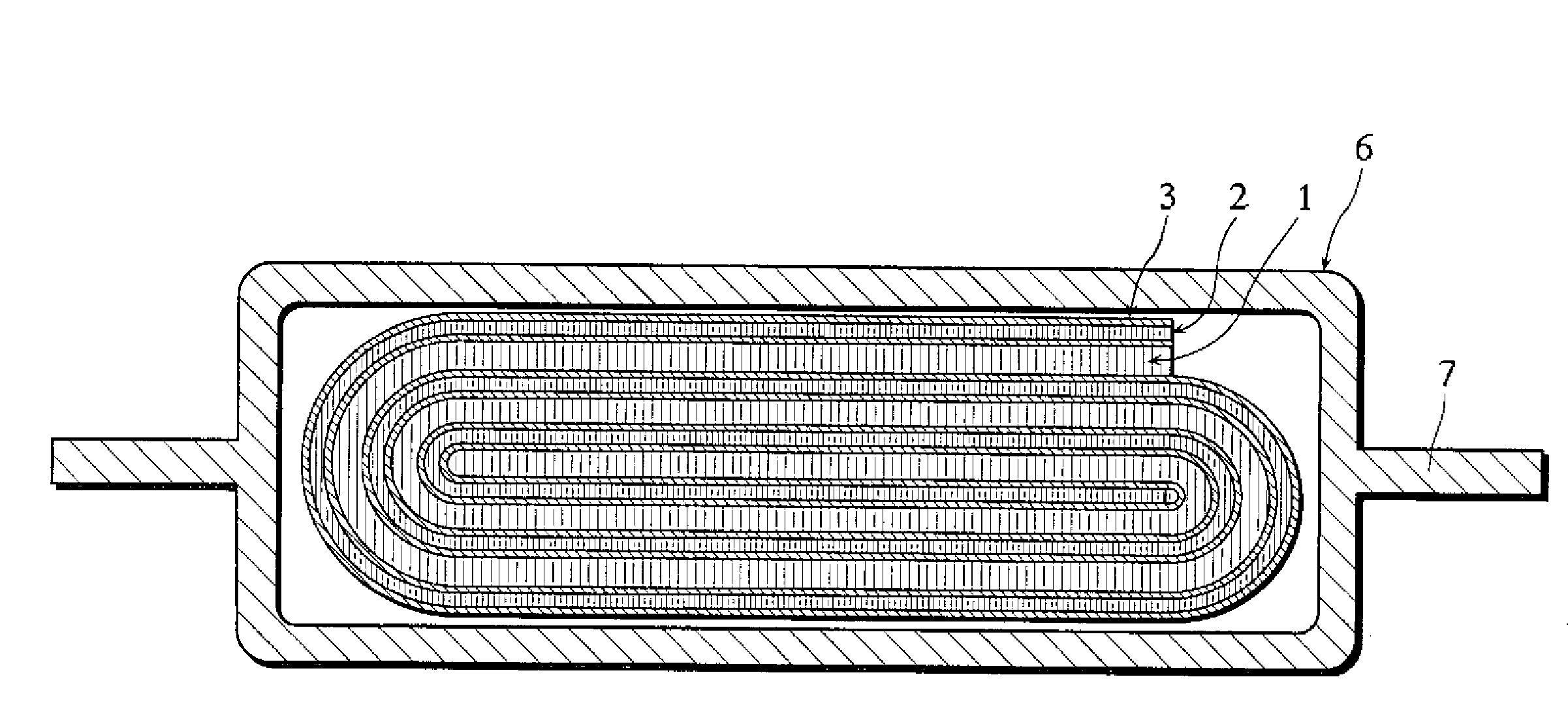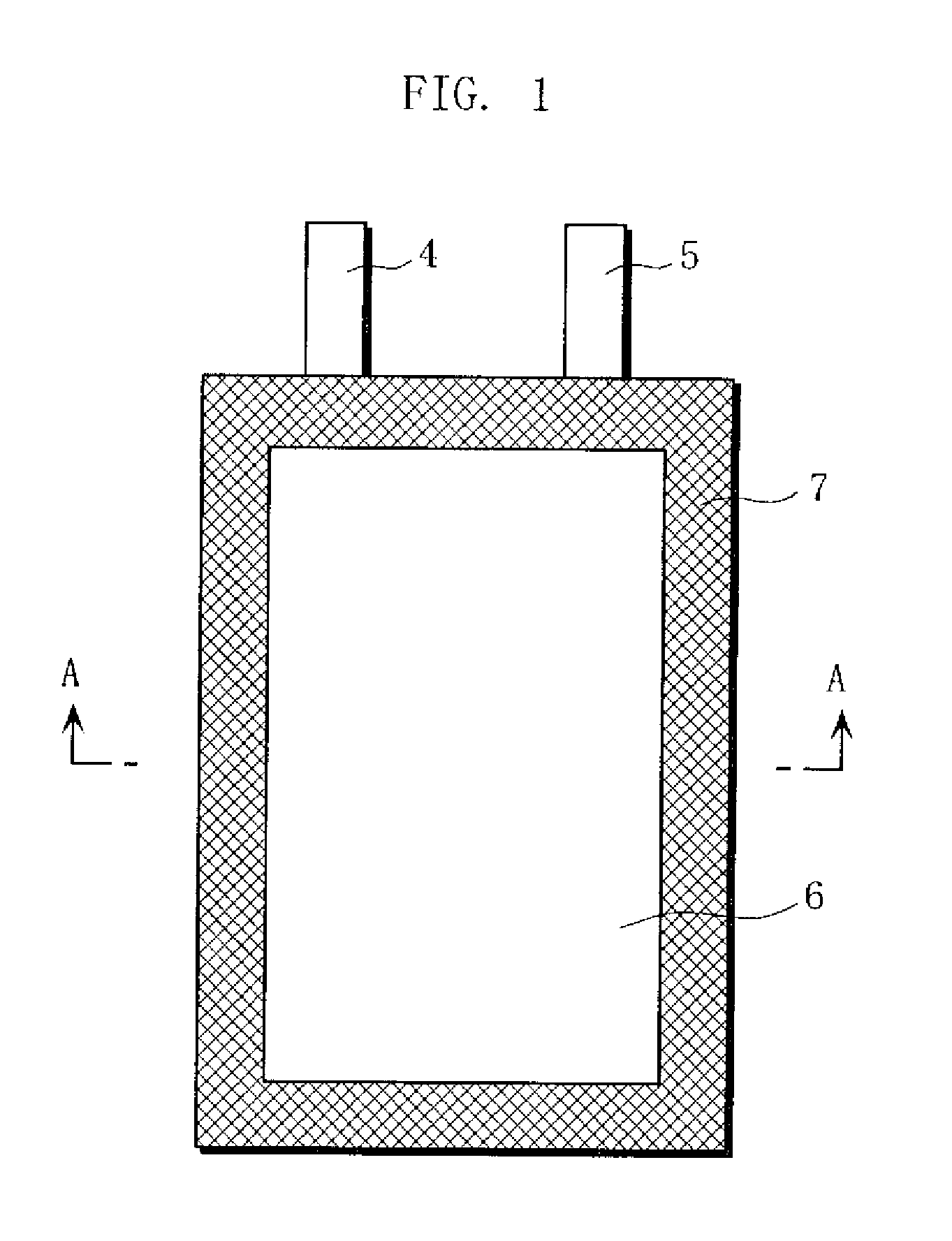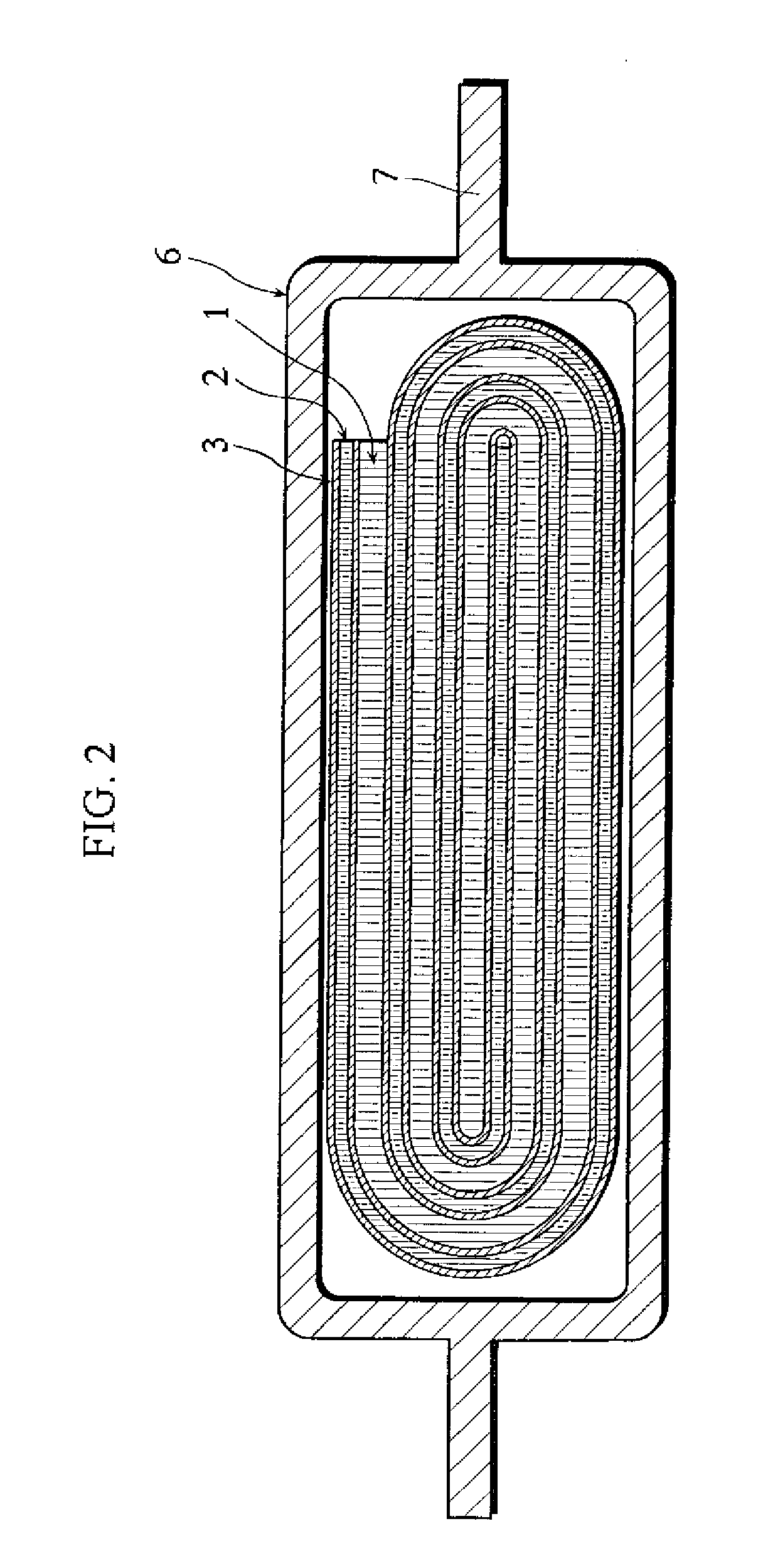Lithium secondary battery and method of manufacturing the same
a secondary battery and lithium battery technology, applied in the field of lithium secondary batteries, can solve the problems of binder resin fracture, high power consumption of lithium secondary batteries that use the above-described the expansion and shrinkage of the negative electrode active materials, so as to inhibit the fracture of the binder resin and improve cycle performance.
- Summary
- Abstract
- Description
- Claims
- Application Information
AI Technical Summary
Benefits of technology
Problems solved by technology
Method used
Image
Examples
examples
First Group of Examples
[0090]In the First Group of Examples, a study was conducted about the effects of the type of binder resin and the particle size of negative electrode active material on battery performance.
example a1
[0091]A battery prepared in the manner described in the foregoing embodiment was used for Example A1.
[0092]The battery fabricated in this manner is hereinafter referred to as Battery A1 of the invention.
examples a2
to A4
[0093]Respective batteries were fabricated in the same manner as described in Example A1 above, except that the average particle sizes of the negative electrode active material particles used were 15 μm, 10 μm, and 5 μm, respectively. Note that the average particle sizes of the negative electrode active material particles were obtained by laser diffraction analysis, as with the method described in the foregoing embodiment. It should also be noted that laser diffraction analysis was used in all the following examples and comparative examples to determine the particle sizes.
[0094]The batteries fabricated in this manner are hereinafter referred to as Batteries A2 to A4 of the invention, respectively.
PUM
 Login to View More
Login to View More Abstract
Description
Claims
Application Information
 Login to View More
Login to View More - R&D
- Intellectual Property
- Life Sciences
- Materials
- Tech Scout
- Unparalleled Data Quality
- Higher Quality Content
- 60% Fewer Hallucinations
Browse by: Latest US Patents, China's latest patents, Technical Efficacy Thesaurus, Application Domain, Technology Topic, Popular Technical Reports.
© 2025 PatSnap. All rights reserved.Legal|Privacy policy|Modern Slavery Act Transparency Statement|Sitemap|About US| Contact US: help@patsnap.com



